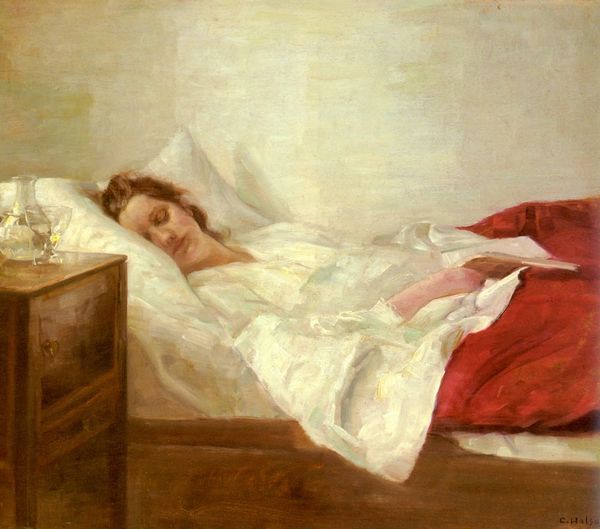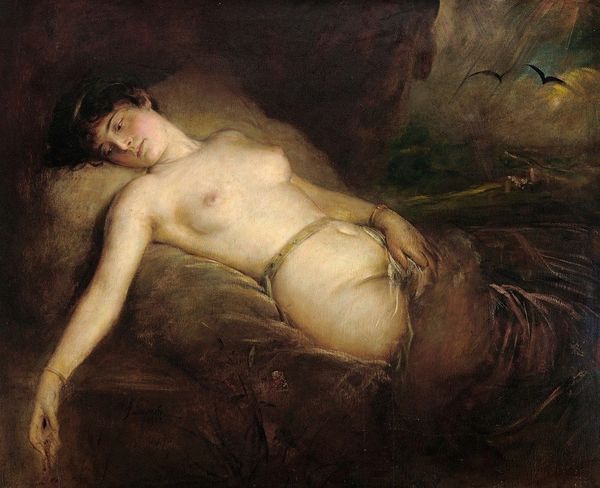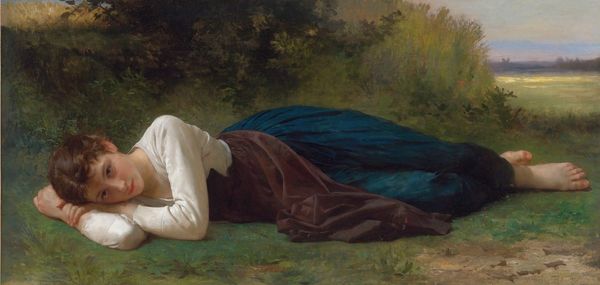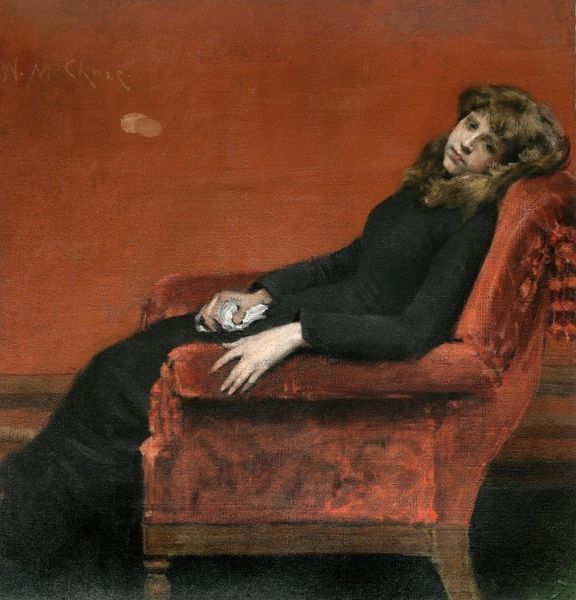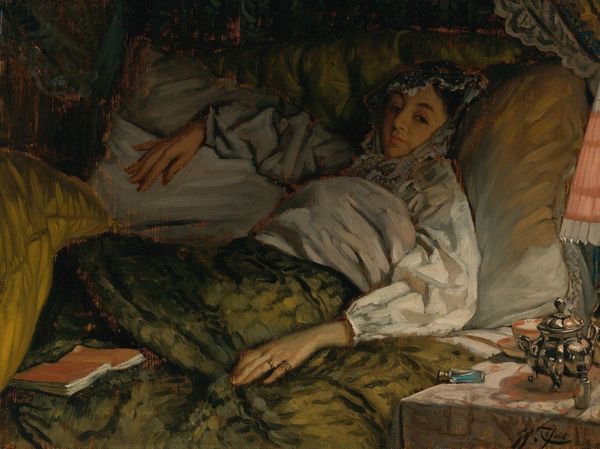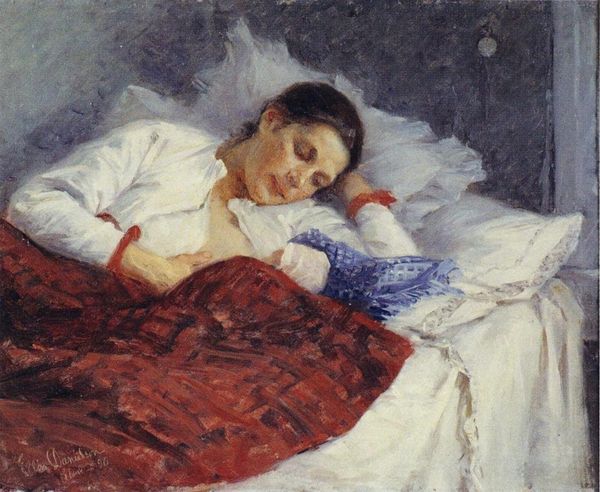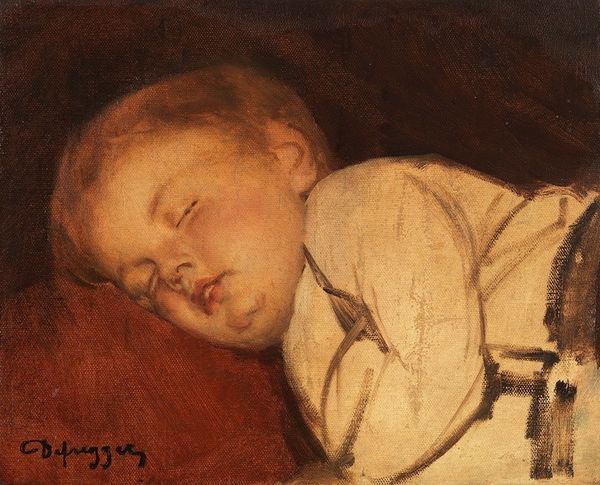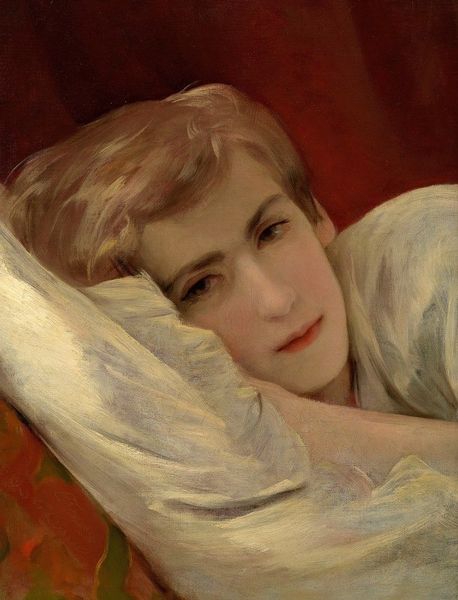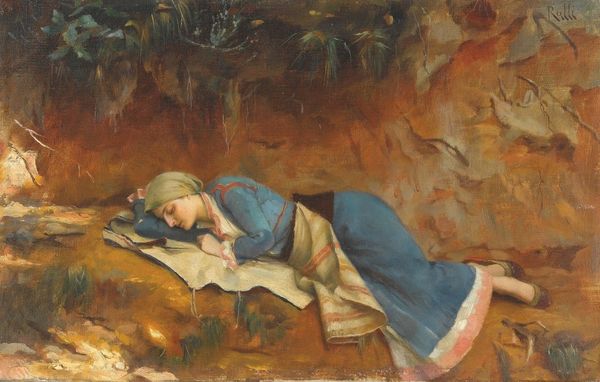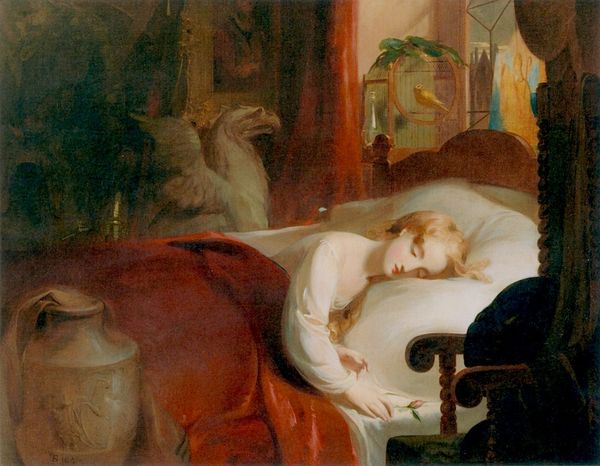
painting, oil-paint
#
portrait
#
painting
#
oil-paint
#
symbolism
#
academic-art
Copyright: Public domain
Curator: Gabriel von Max painted “Clairvoyant-Veritas (The Clairvoyant Truth)” in 1895. It's an oil painting, exhibiting qualities of both academic art and symbolism. What's your first take on it? Editor: An oppressive quiet. The color palette, heavy on muted grays and reds against the expansive darkness, suggests a kind of suffocating interiority, don't you think? Curator: Precisely. Note how the composition is structured; the dark expanse behind the figure is a masterstroke, placing sole emphasis on the young woman and making her luminous features prominent. Editor: I notice she's looking away, lost in thought. It certainly evokes questions about female introspection during that time and the societal pressures placed upon young women. Is this truly “clairvoyant truth” or more like the oppressive truth of women's limited societal roles at the end of the nineteenth century? Curator: That's an interesting angle, and your argument has merit. I was more concerned about how this vision is displayed with carefully rendered features, light, and shadow—a virtuoso display, wouldn’t you say? Her softly modeled face, framed by a loosely styled hairdo, evokes a certain vulnerability but also intelligence. Editor: Certainly the artist demonstrates a remarkable skill with form and color. The subject's internal turmoil hints at a society struggling with outdated norms, which should come to bear on our formal appreciation. Do you observe how her pose indicates an attitude of submissive resignation and not visionary potential? Curator: Perhaps you read too much resignation into it. Perhaps it's a poised moment of clarity and that is how she expresses herself. We are perhaps too eager to apply our own socio-political narratives onto artwork of this kind without truly considering what von Max was trying to accomplish on a formal, compositional level. Editor: Yes, and those social realities invariably shape and define his approach to representation, even if indirectly, and ultimately inform my reading as a contemporary viewer. Art isn't made in a vacuum; context is integral, just like his control of light and shadow is. Curator: It's this contrast, I believe, between artistic ambition and historical-social constraints that makes art criticism so worthwhile. It is the juxtaposition of artistic intentions versus a theoretical exploration of underlying contexts that keeps us intrigued. Editor: Indeed. “Clairvoyant-Veritas” is a striking image of many dualities. From form and subject, we arrive to many divergent insights that resonate within each of us.
Comments
No comments
Be the first to comment and join the conversation on the ultimate creative platform.


